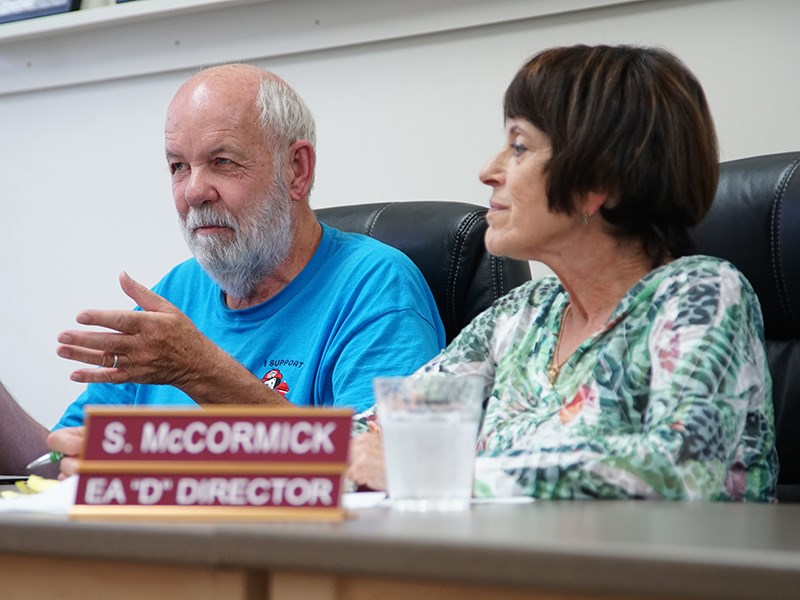A 25-year population projection for qathet Regional District has prompted regional directors to consider economic development ramifications.
Electoral Area D director Sandy McCormick said she found the document, offering population analysis and projections for 2016 to 2041 from electoral areas A, B, C and D, “a really interesting read.”
The document, prepared by the Arlington Group, an outside consultant, was reviewed at the Tuesday, July 9, planning committee meeting.
During the meeting, McCormick alluded to a chart in the document with population projections from 2016 to 2041.
“When I look at the chart and I look at the projections for the four rural areas, I see they are all in the 19 to 20 per cent,” said McCormick. “When I look at the regional district as a whole, it goes down to 18.9 per cent, which tells me the city’s growth is going to be less that what is in the electoral areas.”
McCormick said she is thinking about what kind of economic development strategy the regional district has in place for this projected growth, and how it can attract the growth in the areas it wants to attract growth.
“The reality is we don’t have an economic development strategy,” said McCormick. “This report clearly decries the need to have a regional economic development strategy.”
Services for seniors, for example, are a feature of the Area D official community plan (OCP). McCormick said in Area D: “We are looking at 75 per cent of our population being age 45 or older [in 2041]. We are looking at a whole mass of retirees. They need services.”
McCormick said it would be great to be able to identify everything in each of the electoral areas and do an economic development strategy that would direct staff to go after various sectors.
Area B director Mark Gisborne said when he started reading the report he noticed some very interesting features. He outlined in the statistics the effects of an aging population.
“I think we are very underprepared for what is coming,” said Gisborne.
Looking at the projections, Gisborne said there is a big seniors population in the community. He said health care services have an offshoot locally where younger people are employed, and a number of people in his age bracket have come back to town to look after the older age group.
Area A director Patrick Brabazon said he questions director McCormick’s rationale. If the population is increasing by 20 per cent over this period, he said he wonders why the regional district would have to go out and create an economic development function, which would normally entice more people to come, but they are already coming.
As far as demographics are concerned, the population is aging and there will be a greater demand on the health care system. However, health care is not a regional district responsibility, said Brabazon.
“That’s Vancouver Coastal Health, that’s the province of British Columbia,” said Brabazon. “Unless we create a new service, which I don’t think we’re going to do, there’s nothing we can do to alter the health care except by lobbying the province and Vancouver Coastal Health for more services on their dime, not ours.”
McCormick said economic development is needed to ensure growth in the right areas.
“We want to be able to have people who will service this big influx of seniors we are expecting in the overall demographic scenario we have in front of us,” said McCormick. “We need businesses and services that will support the community.”
McCormick said she thinks it is important that the region gets the kind of services that are needed for people as they reach their senior years. She said maybe it is not a full-blown plan but maybe it requires a look at analyzing the OCP so some recruitment initiatives are targeted.
The planning committee carried a motion that the committee recommend the board receive the population analysis and projections 2016 to 2041.
McCormick then said she would like to propose that staff bring back a report on economic development for the region.
Gisborne said he likes the idea because there is economic development for some of the rural areas and City of Powell River has an economic development department. He said in a lot of cases, the city will draw up plans for what it wants to do and then indicates to the regional district that it wants the regional district to come aboard.
“That’s not really a regional conversation and I like the idea of how we can make regional economic development that includes the municipality," said Gisborne. "That way we don’t have municipal staff and regional district staff doing their own thing. That way we can bring it all together. I like the idea.”
McCormick said she wouldn’t anticipate including the municipality, which has its own economic development service with full-time staff.
“It’s the electoral areas that don’t get any benefit from that,” said McCormick. “Looking at the population projections, let’s be prepared and let’s recruit now for what we see as the need.”
The committee carried a motion that the regional board direct staff to investigate economic development region-wide and report back. The motion will come before the regional board later this month.



